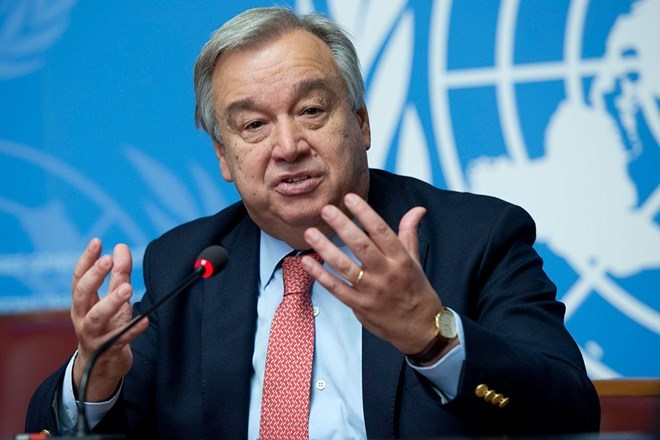
Sunday March 12, 2017

Somalia is currently on the brink of famine with almost half of the country’s population facing acute food insecurity. As famine looms, more than 6.2 million people in the war-torn Horn of Africa country — almost half its population — are currently in need of urgent assistance.
Of this number, more than 363,000 acutely malnourished children and 70,000 severely malnourished children require lifesaving support. As water sources have dried up, Somalis have been forced to drink water infected with cholera. Nearly 8,000 people have been affected and more than 180 have died in the outbreak so far. Nearly 5.5 million people are at risk of cholera.
However, is anybody watching? Listening? Anybody paying attention? Displaying the facts, no matter how horrific, has become close to a useless endeavor. The public is numb. Figures in whatever digits do not shock, do not jolt. The bloated bellies of emaciated children with exaggeratedly big hollow, deeply set eyes do not appear to move people or open their wallets. But with almost three million going hungry, the global public must do something.
This prolonged drought, combined with the effects of the country’s ongoing civil war with the Al-Shabab extremist group, continues to drive extreme shortages of food and water.
Somalia is no stranger to droughts; this is its third in 25 years. Famine in Somalia killed roughly 258,000 people between 2010 and 2012. Just as today, statistics abounded then:
Ten million people currently on the verge of starvation; tens of thousands already dead. Over 2.3 million acutely malnourished children in the Horn; more than half a million may die if they do not get help within weeks. Some 3.2 million people in need of immediate life-saving assistance – almost half the population.
Sounds familiar? If you switched the dates, you wouldn’t be able to tell the difference. At the time, humanitarian organization Oxfam criticized the international community’s response to the famine in Somalia, saying “the world was too slow to respond”. Five years on, the world is still too slow.
Droughts do not happen overnight. The warning signs have been seen for months, and the world has been slow to act. If it doesn’t find a way past its collective prejudice and shortsightedness and start responding now, we will see a preventable humanitarian catastrophe unfold in front of our eyes.
Today, it’s not just Somalia being ravaged. This has been one of the most devastating droughts in recent memory gripping the whole region. The world is facing its largest humanitarian crisis since 1945, the United Nations says, issuing a plea for help to avoid “a catastrophe”. More than 20 million people face the threat of starvation and famine in Somalia, Yemen, South Sudan and Nigeria. Close to 1.4 million children could starve to death this year. To avert disaster, $4.4 billion is needed by July.
So the world ”must act now,” the UN Secretary-General Antonio Guterres said in a tweet, to avert further humanitarian disaster in Somalia and to avoid a famine that might potentially kill thousands. But drought and famine, today and years ago, have rarely been breaking news in poor Africa.
They do not make for banner headlines. They are not what one would call alluring issues. The victims are faceless, unlucky people dealt a bad hand by the mercurial twists of fate.
The rest of the world will apportion blame for the plight of Somalia and other stricken countries while doing very little to help. While we watch and read from the cozy confines of our homes, in Somalia, starving mothers are being forced to choose which child to feed.